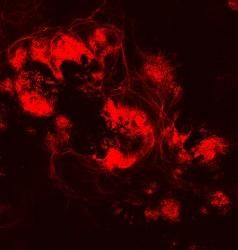The brain’s reserve cells can be activated
Advertisement
Scientists at the Swedish medical university Karolinska Institutet have found a way of activating the neuronal reserves in the brains of mice by switching off the signal that inhibits the formation of new nerve cells. The study is presented in Nature neuroscience.
“So far, this is just basic research of no immediate practical significance, but the results are very exciting nonetheless,” says Professor Jonas Frisén at the Department of Cell and Molecular Biology, who led the study.
New nerve cells are formed from stem cells in specific areas of the human brain. This process increases after a stroke, something that might explain the recovery that is often observed in patients, particularly in the first year following the onset of illness. In the present study, the scientists have demonstrated how a type of cell that does not give rise to new cells in the healthy brain is activated after a stroke in laboratory animals.
In addition to the stem cells that are normally active, there is therefore also a kind of reserve stock of cells the can be activated when demand increases. The team have identified the molecular mechanisms that control the activation of these cells, and shown that it is possible to increase the formation of new nerve cells in healthy mice by switching off the so-called Notch signalling pathway, which inhibits the creation of new nerve cells.
Original publication: Marie Carlén, Konstantinos Meletis, Christian Göritz, Vladimer Darsalia, Emma Evergren, Kenji Tanigaki, Mario Amendola, Fanie Barnabé-Heider, Maggie S Y Yeung, Luigi Naldini, Tasuku Honjo, Zaal Kokaia, Oleg Shupliakov, Robert M Cassidy, Olle Lindvall & Jonas Frisén; "Forebrain ependymal cells are Notch-dependent and generate neuroblasts and astrocytes after stroke"; Nature Neuroscience AOP 2009.























































